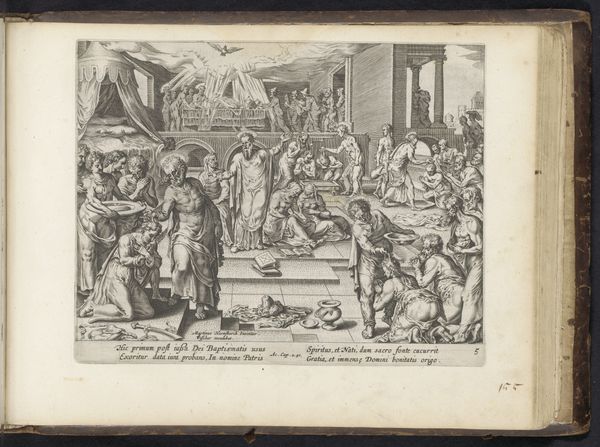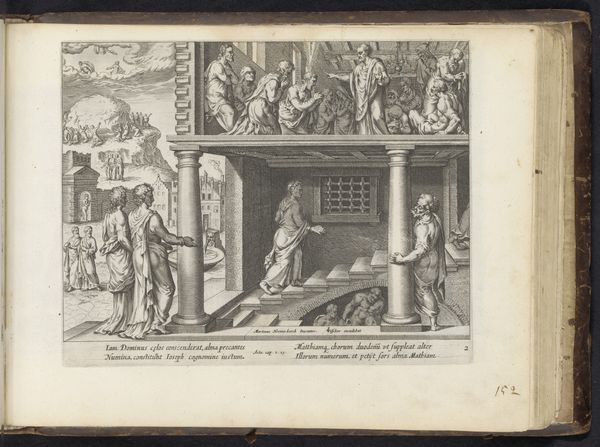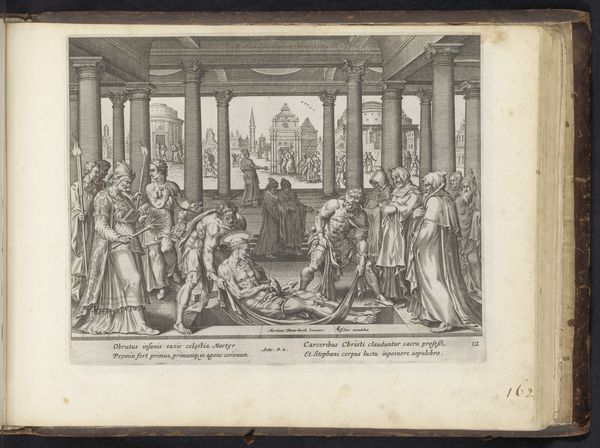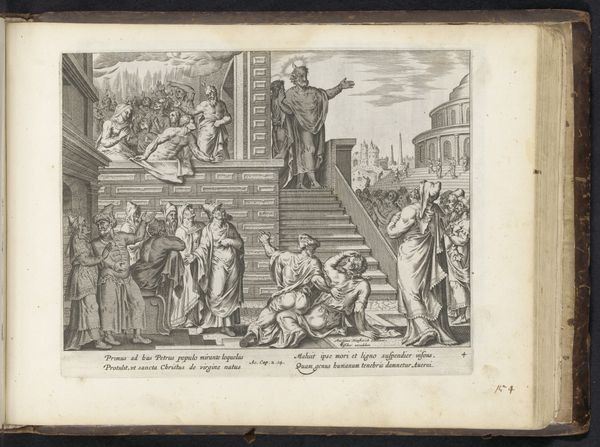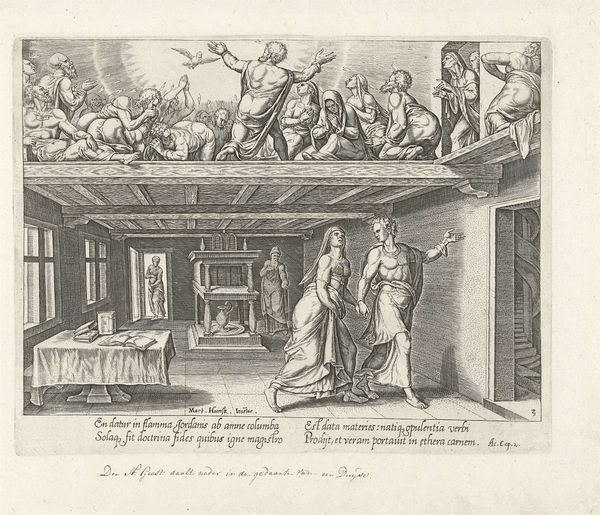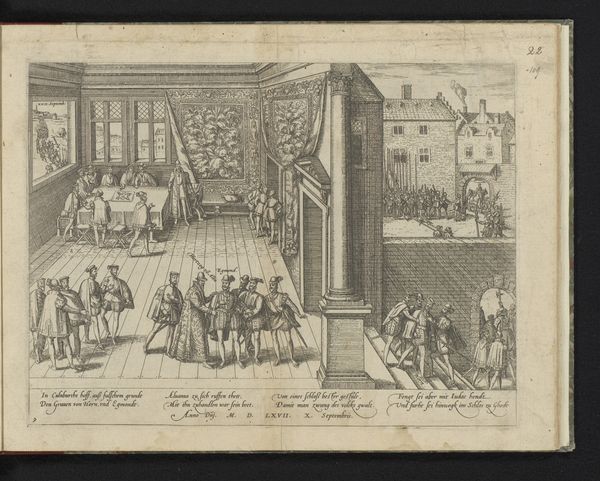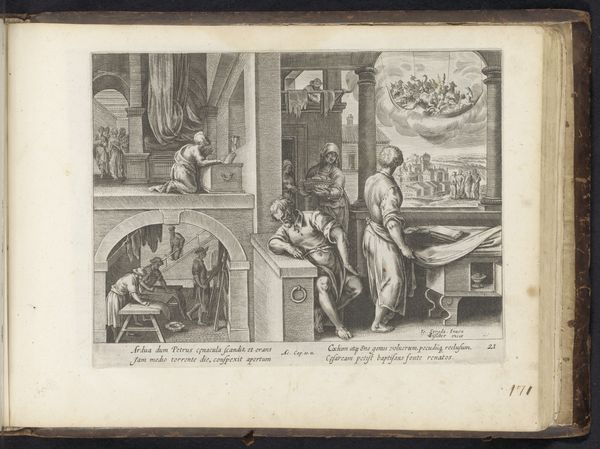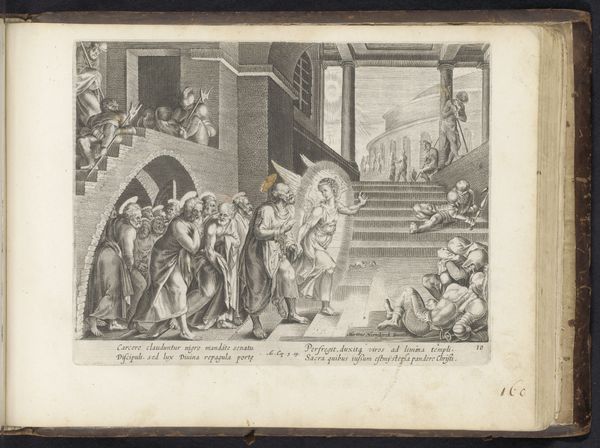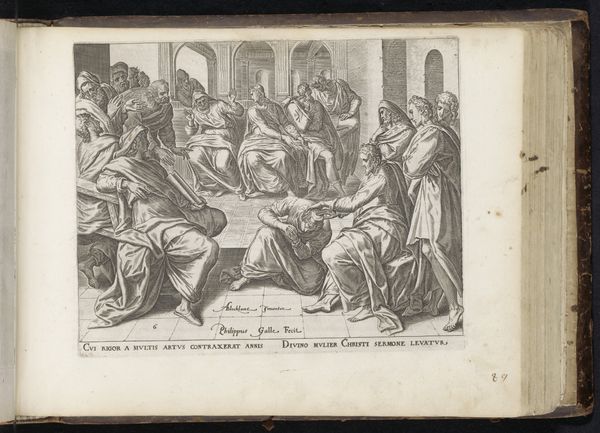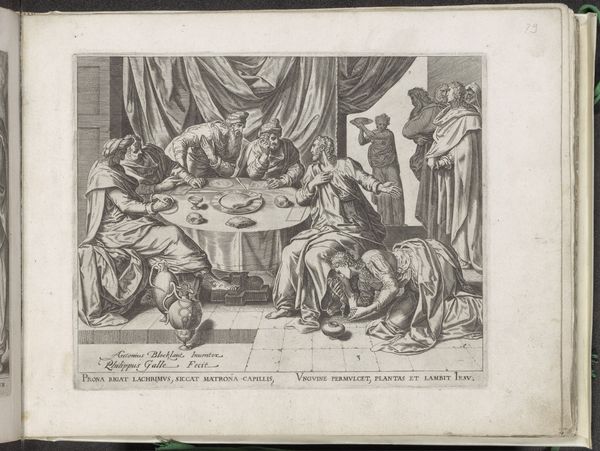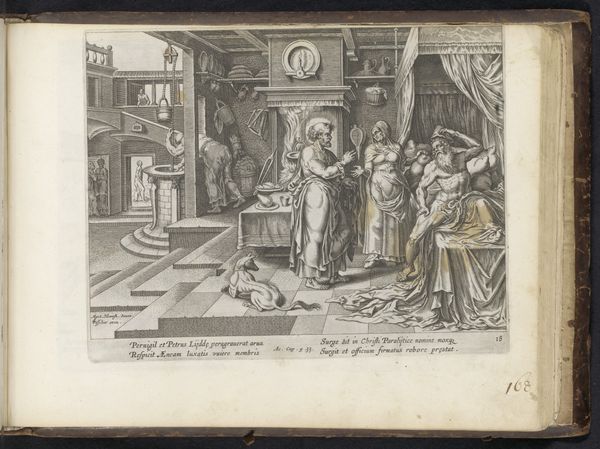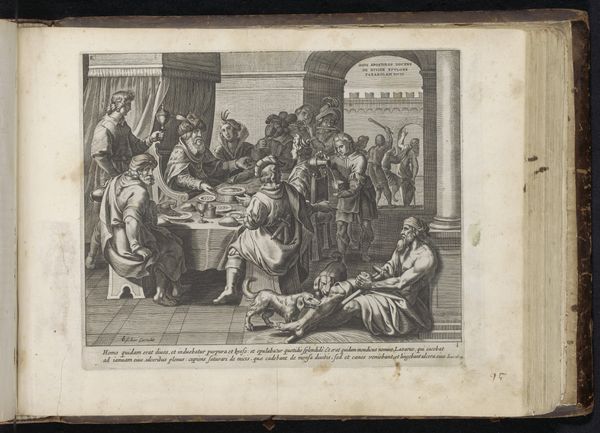
print, engraving
#
narrative-art
#
baroque
# print
#
coloured pencil
#
history-painting
#
engraving
Dimensions: height 209 mm, width 263 mm
Copyright: Rijks Museum: Open Domain
Curator: Let's consider this print, "Uitstorting van de heilige Geest" from around 1643-1646, housed in the Rijksmuseum. It's an engraving. Editor: It's striking how the scene is divided horizontally, the upper area showing what I believe to be the Holy Spirit descending upon figures above, and a rather domestic scene below. What particularly draws your attention? Curator: The interesting division foregrounds two distinct spaces: one divine, and the other seemingly human, even bourgeois. What intrigues me is thinking about how such a print functioned within its period. Was it consumed as religious art or as a sort of didactic material? Was there an effort to control this production in terms of message? How was labor involved? Editor: I see your point. How does its materiality – as an engraving – play into its message or distribution? Curator: The relatively reproducible nature of printmaking is essential. It facilitates broader distribution, and democratizes access to religious imagery but consider its quality and longevity. Did people value or undervalue a print over painting? It suggests something about Baroque society's consumption of spirituality and images, the function of art as an industry. And of course, engravings imply labor -- someone is physically etching this. Do you notice that interplay between sacred subject matter and this mundane aspect? Editor: Absolutely. The skill needed for the detailed etching clashes intriguingly with the spiritual theme, blurring the lines between craft and high art, and prompting a question about the intended audience and their understanding of both the subject and the production involved. Thanks, I hadn't thought of it that way. Curator: Exactly. Considering production helps reveal art's cultural work!
Comments
No comments
Be the first to comment and join the conversation on the ultimate creative platform.

